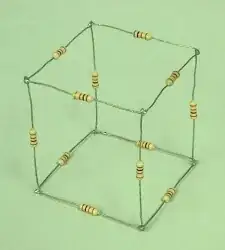Suppose I have a (finite of course!) network of resistors only. Is it always possible to calculate the equivalent resistance between any two points using only parallel, series, Y-Δ and Δ-Y (wye-delta and delta-wye) transforms?
Conversely, is there a resistor network where the star-mesh transform for n>3 is absolutely necessary to find the equivalent resistance between some two nodes?
